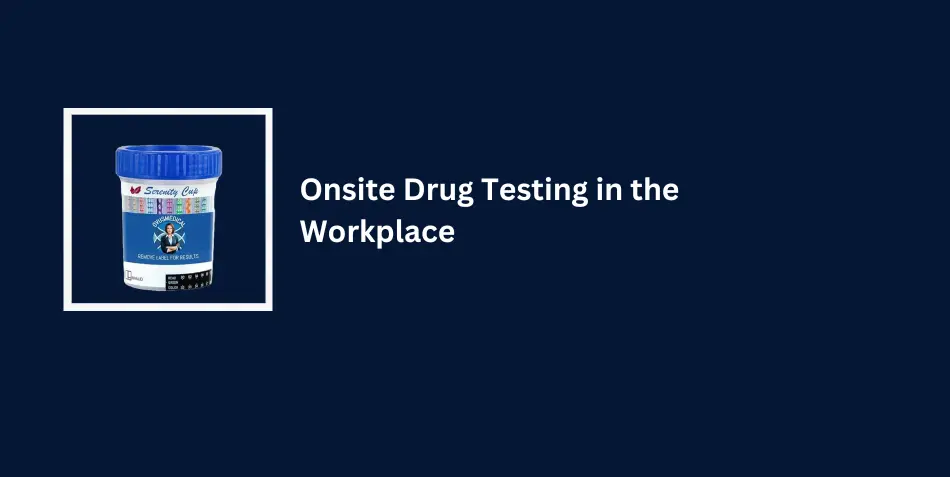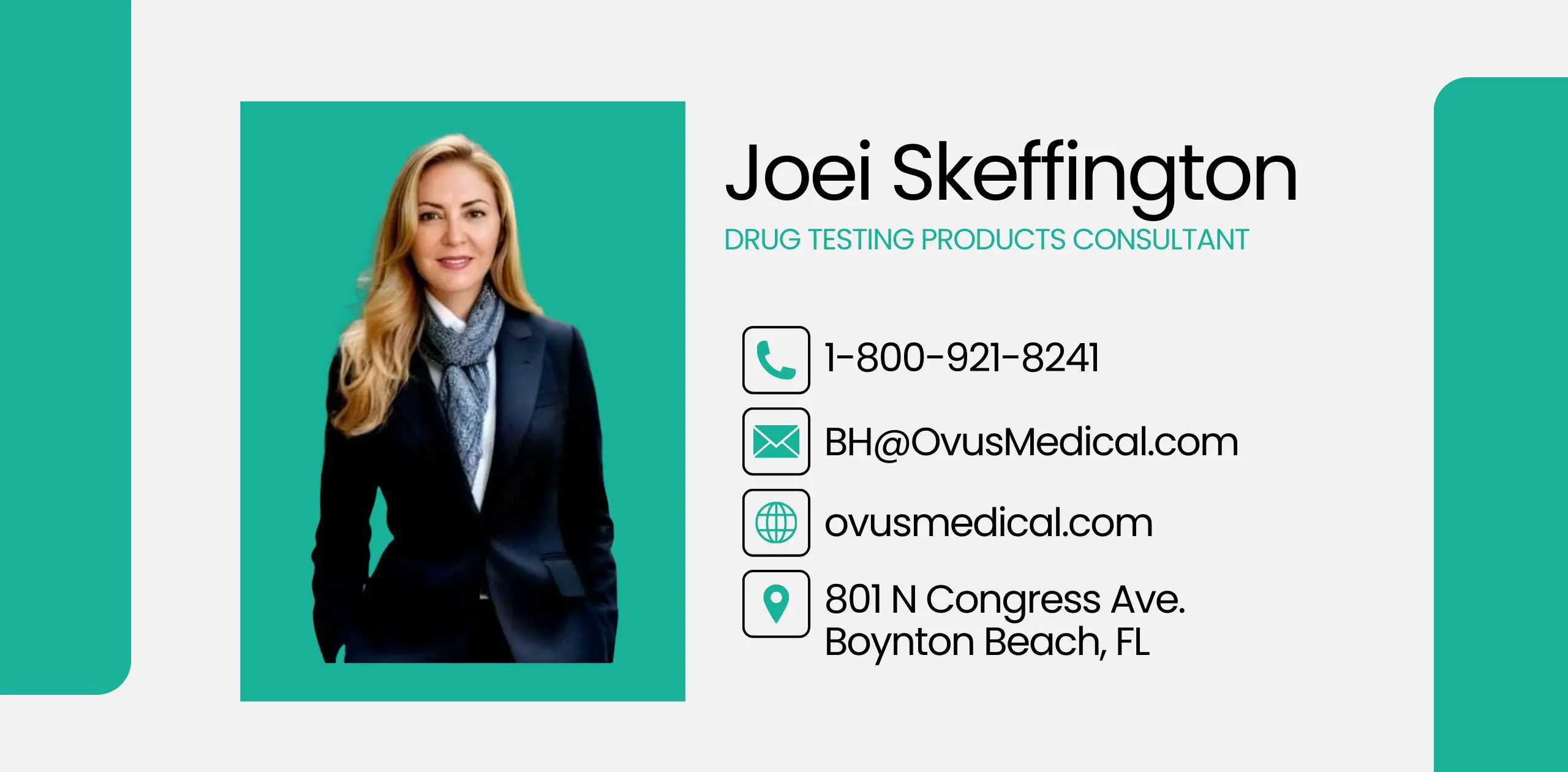According to US Legal, onsite drug testing is a drug test to which an employee is subjected to by an employer. It may required as part of its drug testing policy, using products approved by the Food and Drug Administration (FDA). It should conducted by a test administrator from a state-certified laboratory.
Although a controversial matter in the US, drug testing in the workplace is still being implemented in government and private industries where customer safety is of prime concern, evidence after evidence shows how illegal drugs affect employee productivity, attendance, social behavior, and so on.
This post will discuss the different types of onsite drug testing, the most common drug tests, and how it should performed in the workplace. This post also includes a chart that features the different laws that govern drug testing in various states.
Purchase Drug Testing Supplies Here At Lowest Prices Guaranteed – Free Shipping
5 Types of Onsite Drug Testing
1. Pre-employment drug test
Pre-employment is the most common type of drug testing. It is required by most companies prior to hiring a candidate.
2. Random drug screening
Random drug testing, as the name suggests, is unplanned. It can performed on any employee anytime. Some states required to provide a notice to employees, but not for most. It is an attempt to prevent employees from using illegal substances.
3. Post-accident drug screening
When an employee involved in an accident, whether the results detrimental to him and others, a post-accident drug test is performed to find out if the employee is under the influence. If the employee is found guilty, he may be suspended, sent to a rehabilitation facility, or, in worst-case scenarios, terminated from his job.
4. Reasonable suspicion drug testing
This type of drug test administered to people who suspected of using illegal substances due to behaviors related to a drug-induced state –violent behavior, suicidal thoughts, and tendencies – that may harm not only the concerned employee but others as well.
5. Return to duty/ follow up drug screening
If an employee who caught and suspended or sent to rehab for violating the company’s policies on illegal drug use, he will subjected to a return to duty drug examination. If the test proves that the employee is still using drugs, he or she can terminated.

Other Drug Testing Products We Offer:
Types of Drug Tests
Below are the three basic types of drug tests.
1. Urine Testing
This is the most basic and non-invasive type of drug test. A drug testing cup used to collect about 30 ml of urine. Then, a strip is inserted, depending on what drugs are to be checked. A 6 panel urine drug test, for example, is used to detect frequently abused substances like opiates and cocaine. 10 panel cups, on the other hand, is for detecting amphetamine, ecstasy, marijuana, among others. A 12 panel drug test used to detect barbiturates, oxycodone, and tricyclic antidepressants in the metabolite.
Be aware, however, that this test is easy to manipulate. Clients can dilute their urine with water or substitute it with drug-free urine. They might also try to take detoxifiers or drink plenty of water to pass the test.
How to Perform an Onsite Urine Drug Testing
- Prior to testing, a standardized form given to the employee. He or she must fill this up.
- An area in the workplace will set up specifically for the procedure.
- A site collection person will assigned to ensure the integrity of samples.
- The collection of urine samples should done in private. The employee will given a CLIA-approved urine drug testing cup. In case of supervised testing or if a non-medical person assigned, only the same gender as the client allowed to assist. Then, 30 ml to 45 ml of urine will collected.
- The urine sample will analyzed.
State-by-state Workplace Drug Testing Laws
Drug testing laws may vary from state to state. For more details, check out the chart below.
Conclusion
Onsite drug testing is a critical tool for maintaining a safe, productive, and drug-free workplace. By implementing different types of drug testing—such as pre-employment, random, post-accident, reasonable suspicion, and return-to-duty testing—employers can effectively deter drug use and ensure compliance with company policies.
Urine testing remains the most widely used method due to its simplicity and non-invasive nature. However, employers must be vigilant about potential manipulation and follow proper protocols to ensure accurate results. Understanding state-specific drug testing laws is also essential to avoid legal complications.
For organizations looking to implement or enhance their drug testing programs, Ovus Medical offers a range of FDA-approved, CLIA-waived, and SAMHSA-compliant drug testing solutions. These products provide reliable and efficient ways to conduct onsite drug testing, helping employers maintain a safe and productive work environment.
FAQs About Onsite Drug Testing
- What is onsite drug testing?
Onsite drug testing is a process where employers conduct drug tests at the workplace using FDA-approved products. It is often performed by a certified test administrator. - What are the types of onsite drug testing?
The main types include pre-employment, random, post-accident, reasonable suspicion, and return-to-duty/follow-up drug testing. - What is a pre-employment drug test?
A pre-employment drug test is conducted before hiring a candidate to ensure they are free from illegal drug use. - How does random drug testing work?
Random drug testing is unplanned and can be conducted on any employee at any time to deter drug use in the workplace. - What is a post-accident drug test?
A post-accident drug test is performed after an workplace accident to determine if the employee was under the influence of drugs. - What is reasonable suspicion drug testing?
This type of testing is conducted when an employee exhibits behaviors that suggest drug use, such as violent behavior or impaired performance. - What is a return-to-duty drug test?
A return-to-duty drug test is required for employees who have previously failed a drug test and are returning to work after suspension or rehabilitation. - What is the most common type of drug test?
Urine testing is the most common and non-invasive method, often using multi-panel drug test cups to detect various substances. - Can urine drug tests be manipulated?
Yes, urine drug tests can be manipulated through dilution, substitution, or detoxifiers. Proper supervision and protocols are necessary to ensure accurate results. - Are drug testing laws the same in every state?
No, drug testing laws vary by state. Employers must comply with state-specific regulations regarding drug testing policies and procedures.

